A Novel Method for Quadrature Signal Construction in a Semiconductor Self-Mixing Interferometry System Using a Liquid Crystal Phase Shifter
Abstract
:1. Introduction
2. Theory
2.1. Fundamentals of Lasing Characteristics of Laser Diode (LD) with External Cavity
2.2. Theory of Quadrature Signal Construction in SMI Using LCPS
3. Simulations and Experiments
3.1. Experimental Setup
3.2. Results
3.3. Simulations and Experiments under the Condition of Vibration Amplitudes near λ/4
3.4. Relationship between SMI Signal Phase Difference and LCPS Drive Voltage
4. Discussion
5. Conclusions
Author Contributions
Funding
Institutional Review Board Statement
Informed Consent Statement
Data Availability Statement
Conflicts of Interest
References
- Contreras, V.; Toivonen, J.; Martinez, H. Enhanced self-mixing interferometry based on volume Bragg gratings and laser diodes emitting at 405-nm wavelengths. Opt. Lett. 2017, 42, 2221. [Google Scholar] [CrossRef]
- Giuliani, G.; Norgia, M.; Donati, S.; Bosch, T.J. Laser diode self-mixing technique for sensing applications. Opt. A 2002, 4, S283. [Google Scholar] [CrossRef]
- Donati, S. Developing self-mixing interferometry for instrumentation and measurements. Laser Photon. Rev. 2012, 6, 393. [Google Scholar] [CrossRef]
- Guo, D.; Shi, L.; Yu, Y.; Xia, W.; Wang, M. Micro-displacement reconstruction using a laser self-mixing grating interferometer with multiple-diffraction. Opt. Express 2017, 25, 31394. [Google Scholar] [CrossRef] [PubMed]
- Shi, L.; Guo, D.; Cui, Y.; Hao, H.; Xia, W.; Wang, Y.; Ni, X.; Wang, M. Design of a multiple self-mixing interferometer for a fiber ring laser. Opt. Lett. 2018, 43, 4124. [Google Scholar] [CrossRef] [PubMed]
- Li, K.; Cavedo, F.; Pesatori, A.; Zhao, C.; Norgia, M. Balanced detection for self-mixing interferometry. Opt. Lett. 2017, 42, 283. [Google Scholar] [CrossRef]
- Magnani, A.; Pesatori, A.; Norgia, M. Real-time Self-mixing interferometer for long distances. IEEE Trans. Instrum. Meas. 2014, 63, 1804. [Google Scholar] [CrossRef]
- Jiang, C.; Geng, Y.; Liu, Y.; Liu, Y.; Chen, P.; Yin, S. Rotation velocity measurement based on self-mixing interference with a dual-external-cavity single-laser diode. Appl. Opt. 2019, 58, 604. [Google Scholar] [CrossRef]
- Yáñez, C.; Azcona, F.; Royo, S. Confocal flowmeter based on self-mixing interferometry for real-time velocity profiling of turbid liquids flowing in microcapillaries. Opt. Express 2019, 27, 24340. [Google Scholar] [CrossRef]
- Gao, B.; Qing, C.; Yin, S.; Peng, C.; Jiang, C. Measurement of rotation speed based on double-beam self-mixing speckle interference. Opt. Lett. 2018, 43, 1531. [Google Scholar] [CrossRef]
- Qi, P.; Zhou, B.; Zhang, Z.; Li, S.; Li, Y.; Zhong, J. Phase-sensitivity-doubled surface plasmon resonance sensing via self-mixing interference. Opt. Lett. 2018, 43, 4001. [Google Scholar] [CrossRef] [PubMed]
- Norgia, M.; Pesatori, A.; Donati, S. Compact laser-diode instrument for flow-measurement. IEEE Trans. Instrum. Meas. 2016, 65, 1478. [Google Scholar] [CrossRef]
- Li, J.; Tan, Y.; Zhang, S. Generation of phase difference between self-mixing signals in a-cut Nd:YVO4 laser with a waveplate in the external cavity. Opt. Lett. 2015, 40, 3615–3618. [Google Scholar] [CrossRef] [PubMed]
- Xu, Z.; Li, J.; Zhang, S.; Tan, Y.; Zhang, X.; Lin, X.; Wan, X.; Zhuang, S. Remote eavesdropping at 200 meters distance based on laser feedback interferometry with single-photon sensitivity. Opt. Lasers Eng. 2021, 141, 106562. [Google Scholar] [CrossRef]
- Zhao, Y.; Zhou, J.; Wang, C.; Xiang, R.; Bi, T.; Lu, L. Design and application research of the multi-longitudinal mode laser self-mixing vibration measurement system. Measurement 2019, 114, 381. [Google Scholar] [CrossRef]
- Wang, C.; Fan, X.; Guo, Y.; Gui, H.; Wang, H.; Liu, J.; Yu, B.; Lu, L. Full-circle range and microradian resolution angle measurement using the orthogonal mirror self-mixing interferometry. Opt. Express 2018, 26, 10371. [Google Scholar] [CrossRef]
- Xiang, R.; Yu, B.; Lu, L. Real-time vibration monitoring system of thin-walled structures’ health status based on the self-mixing effect. In Proceedings of the International Conference on Optical Instruments and Technology 2017: Advanced Optical Sensor and Applications, Beijing, China, 2018; Volume 10618. [Google Scholar]
- Wang, B.; Liu, B.; An, L.; Tang, P.; Ji, H.; Mao, Y. Laser Self-Mixing Sensor for Simultaneous Measurement of Young’s Modulus and Internal Friction. Photonics 2021, 8, 550. [Google Scholar] [CrossRef]
- Guo, D.; Xie, Z.; Yang, Q.; Xia, W.; Yu, Y.; Wang, M. Self-Mixing Interferometry Cooperating with Frequency Division Multiplexing for Multiple-Dimensional Displacement Measurement. Photonics 2023, 10, 839. [Google Scholar] [CrossRef]
- Liu, B.; Ruan, Y.; Yu, Y. Determining System Parameters and Target Movement Directions in a Laser Self-Mixing Interferometry Sensor. Photonics 2022, 9, 612. [Google Scholar] [CrossRef]
- Wang, X.; Zhong, Z.; Chen, H.; Zhu, D.; Zheng, T.; Huang, W. High-Precision Laser Self-Mixing Displacement Sensor Based on Orthogonal Signal Phase Multiplication Technique. Photonics 2023, 10, 575. [Google Scholar] [CrossRef]
- Tao, Y.; Xia, W.; Wang, M.; Guo, D.; Hao, H. Integration of polarization-multiplexing and phase-shifting in nanometric two dimensional self-mixing measurement. Opt. Express 2017, 25, 2285. [Google Scholar] [CrossRef] [PubMed]
- Zhang, Z.; Li, C.; Huang, Z. Quadrature demodulation based on lock-in amplifier technique for self-mixing interferometry displacement sensor. Appl. Opt. 2019, 58, 6098. [Google Scholar] [CrossRef] [PubMed]
- Zhang, Z.; Li, C.; Huang, Z. Vibration measurement based on multiple Hilbert transform for self-mixing interferometry. Opt. Commun. 2019, 436, 192. [Google Scholar] [CrossRef]
- Fan, Y.; Yu, Y.; Xi, J.; Chicharo, J. Improving the measurement performance for a self-mixing interferometry-based displacement sensing system. Appl. Opt. 2011, 50, 5064. [Google Scholar] [CrossRef]
- Wang, X.; Yuan, Y.; Sun, L.; Gao, B.; Chen, P. Self-mixing interference displacement measurement under very weak feedback regime based on integral reconstruction method. Opt. Commun. 2019, 445, 236. [Google Scholar] [CrossRef]
- Wu, J.; Shu, F. Quadrature detection for self-mixing interferometry. Opt. Lett. 2018, 43, 2154. [Google Scholar] [CrossRef]
- Petermann, K. Basic Laser Characteristics. In Laser Diode Modulation and Noise; Kluwer: Dordrecht, The Netherlands, 1988; Volume 3, pp. 25–26. [Google Scholar]
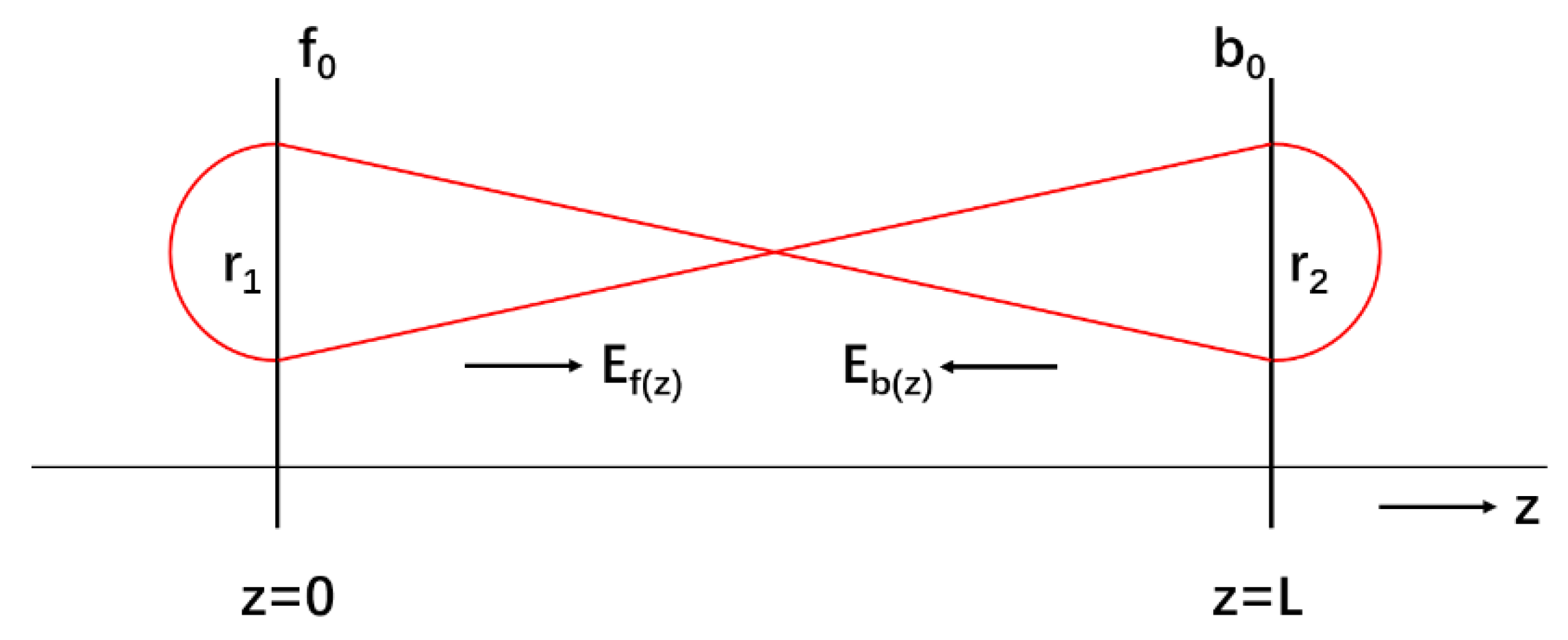

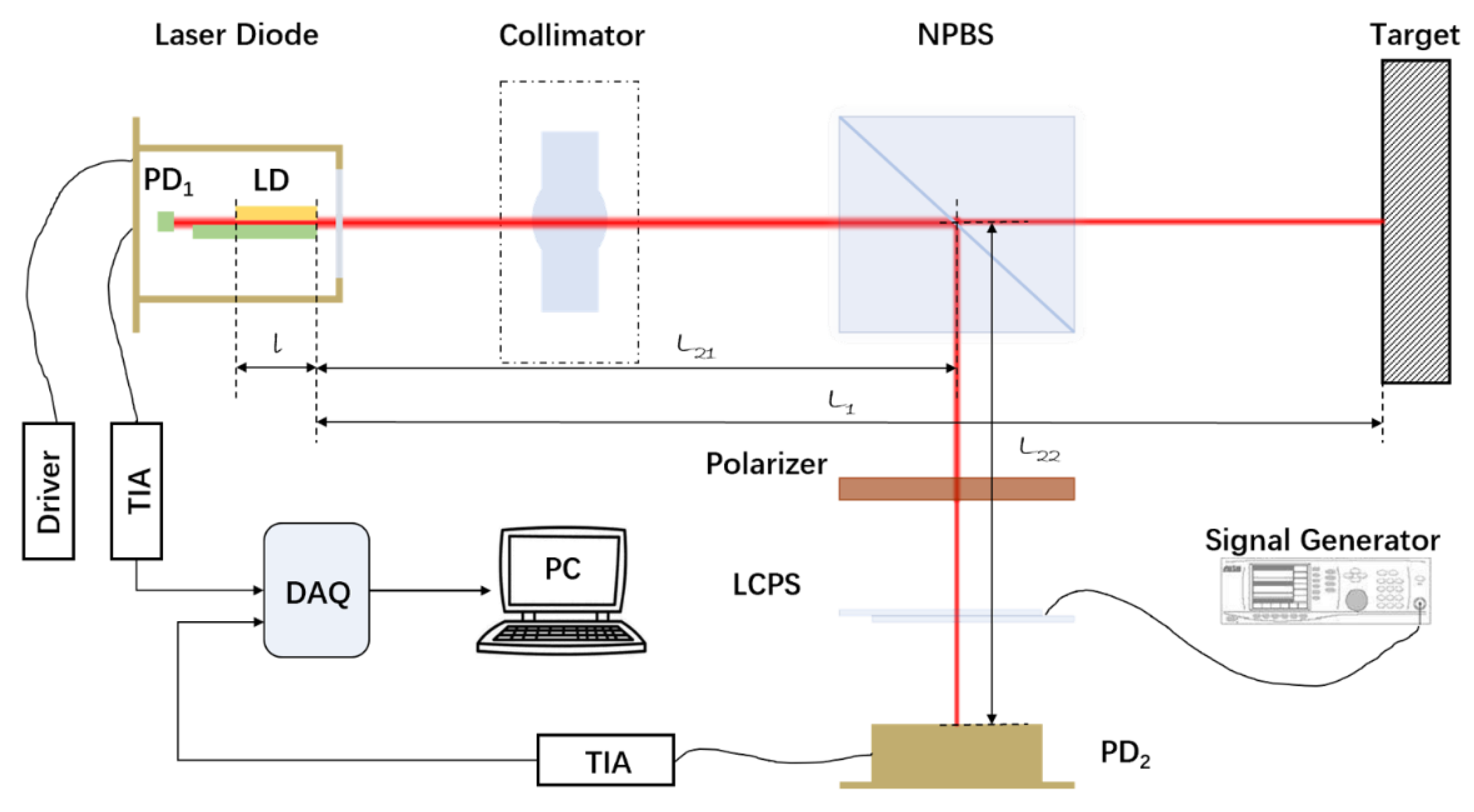



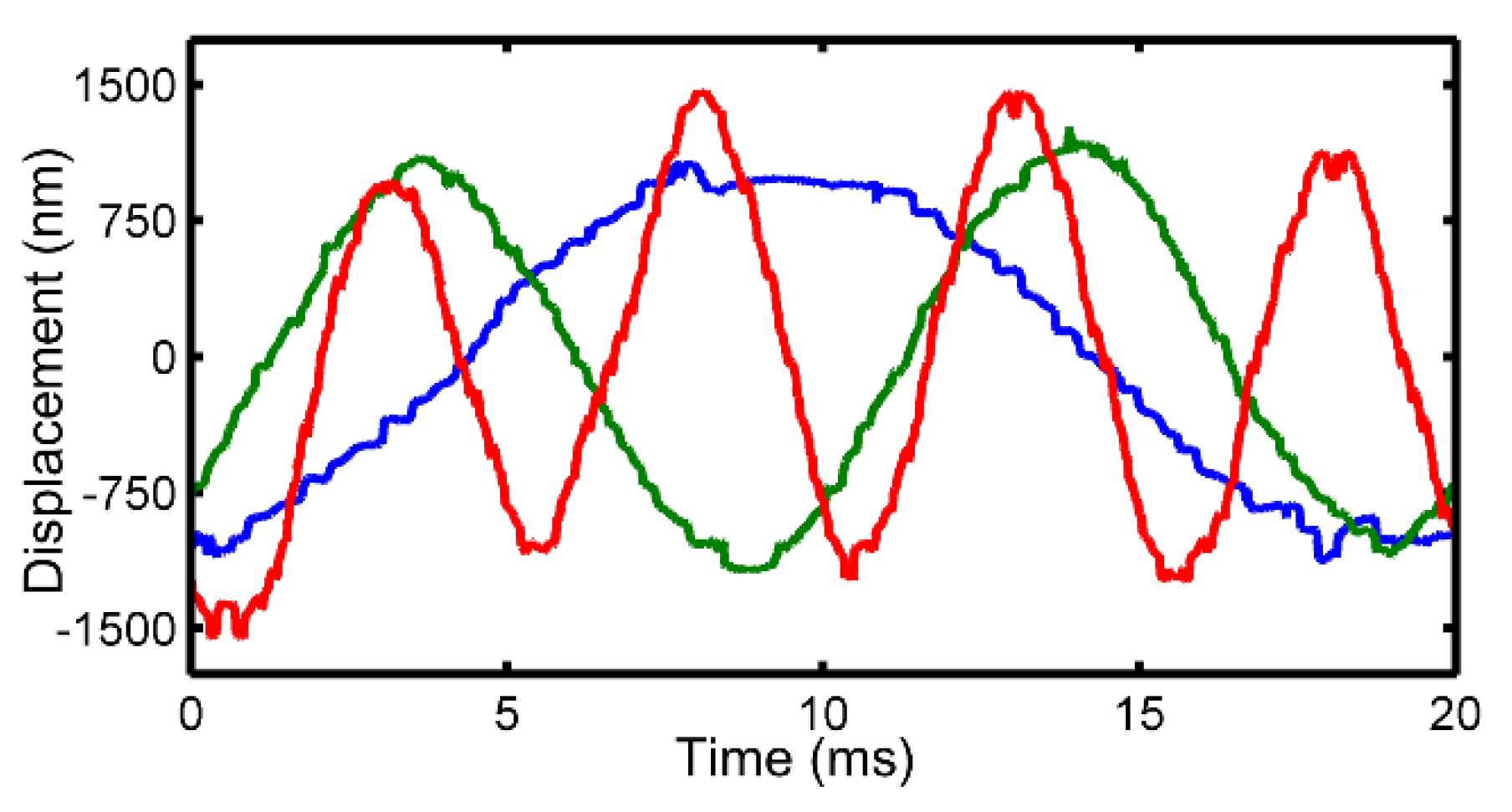
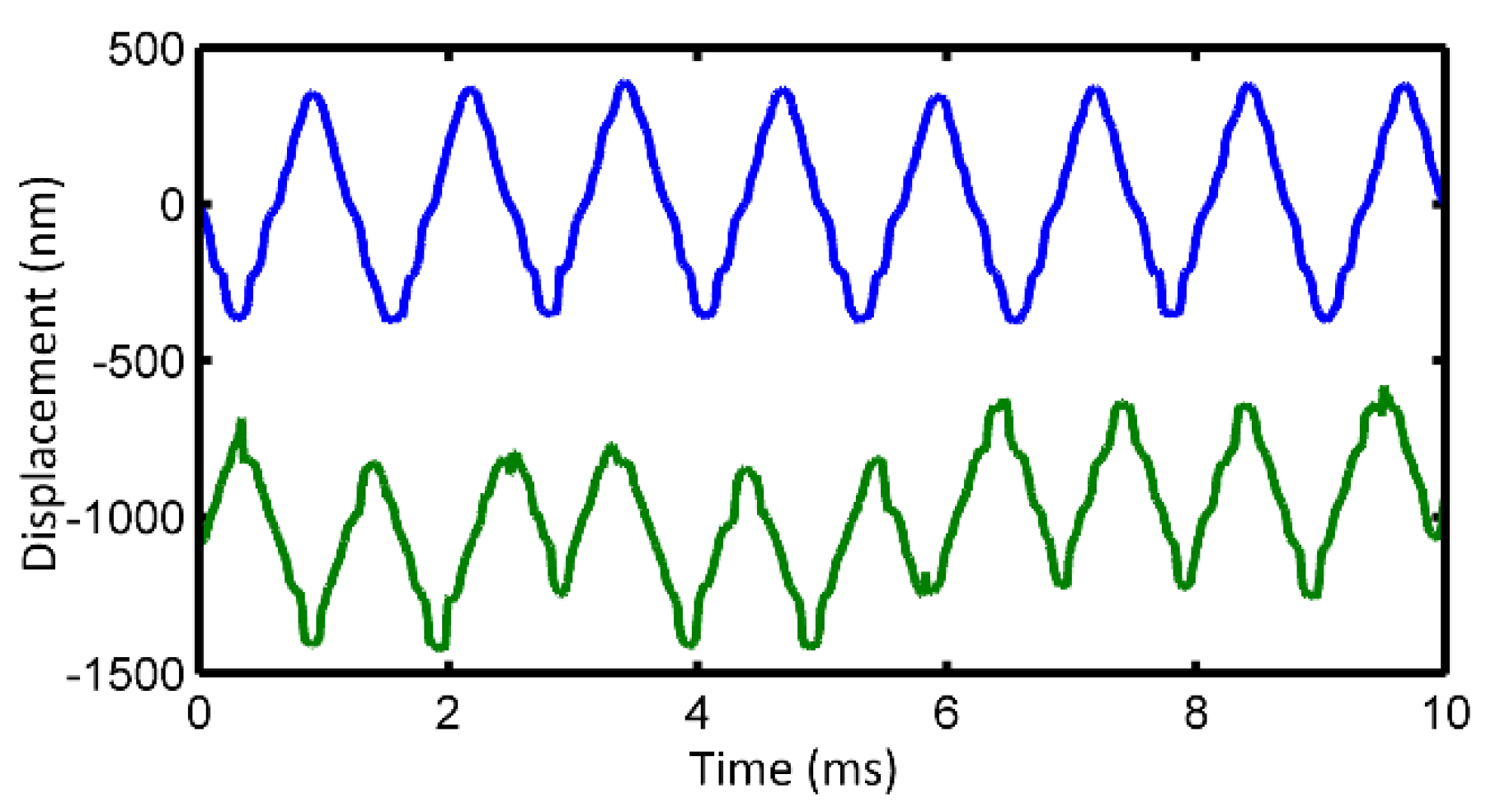
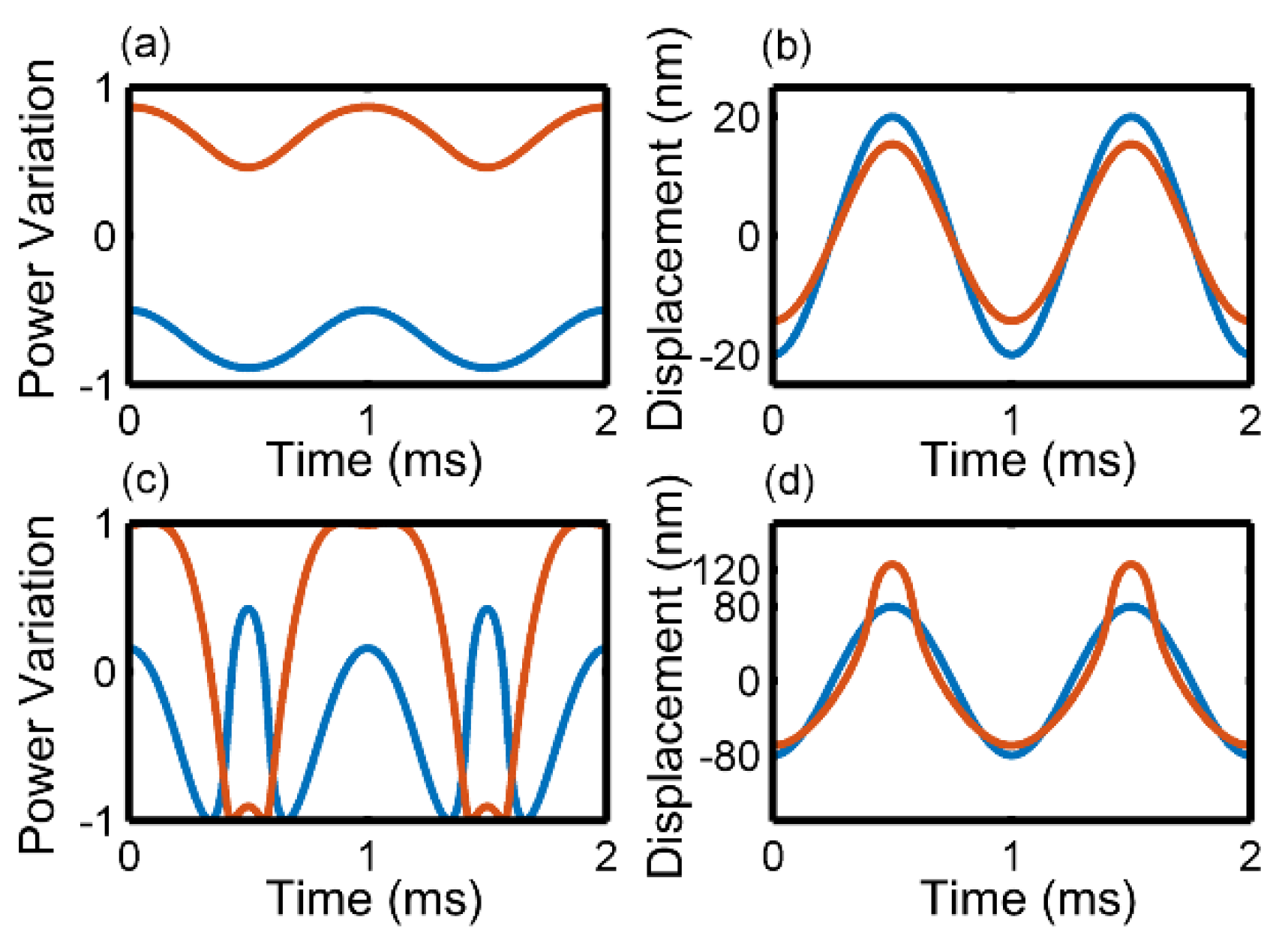
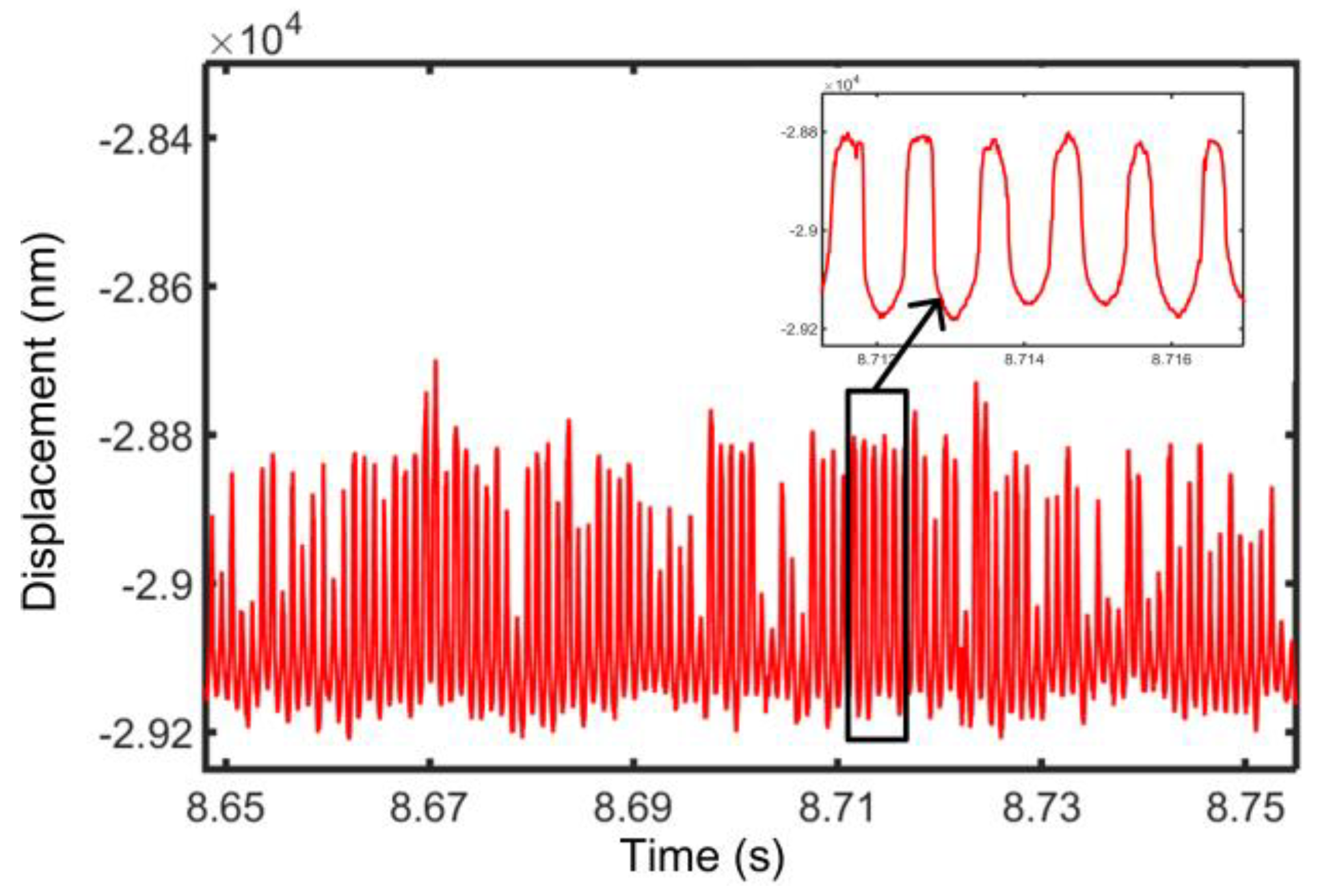


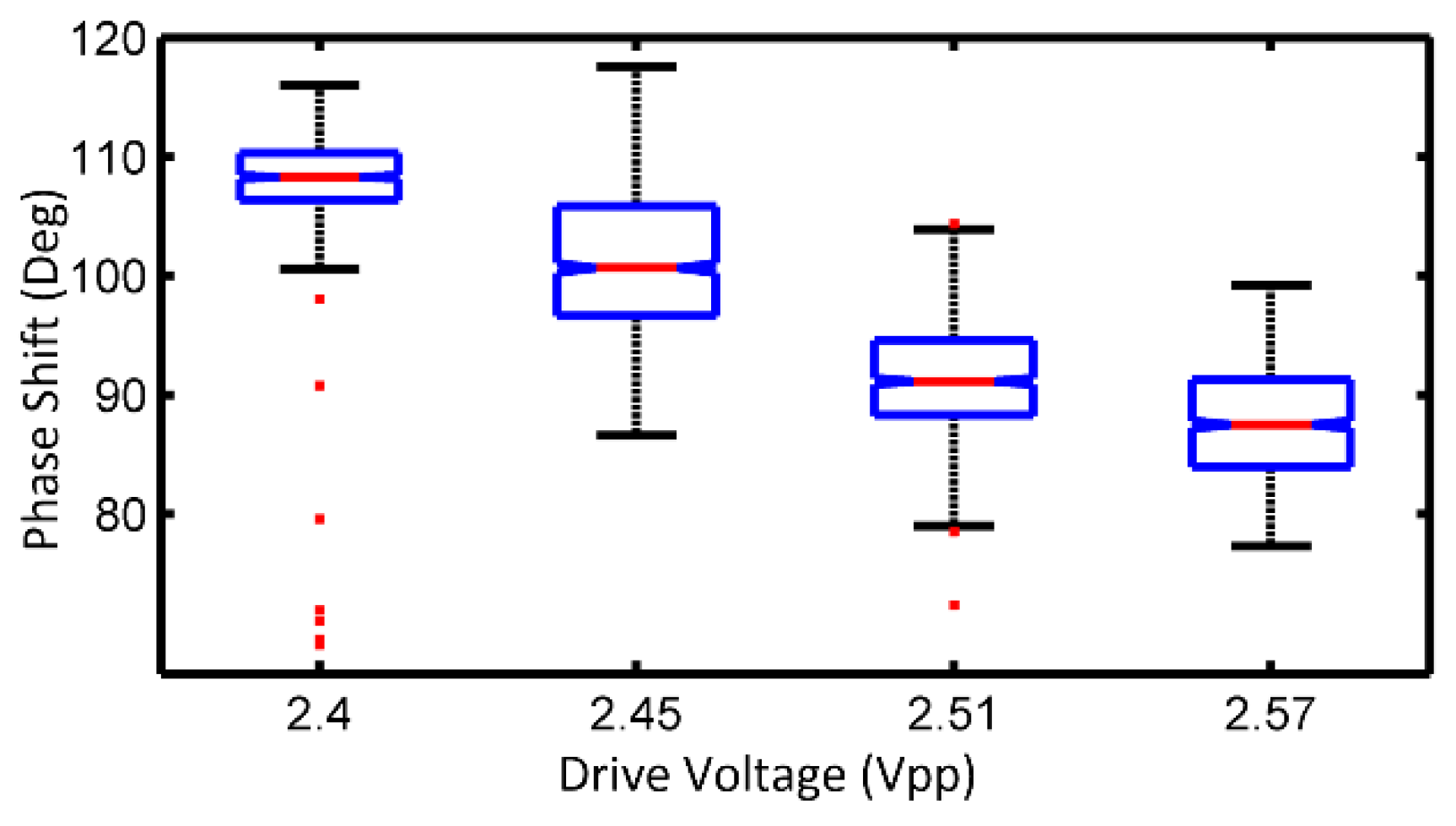
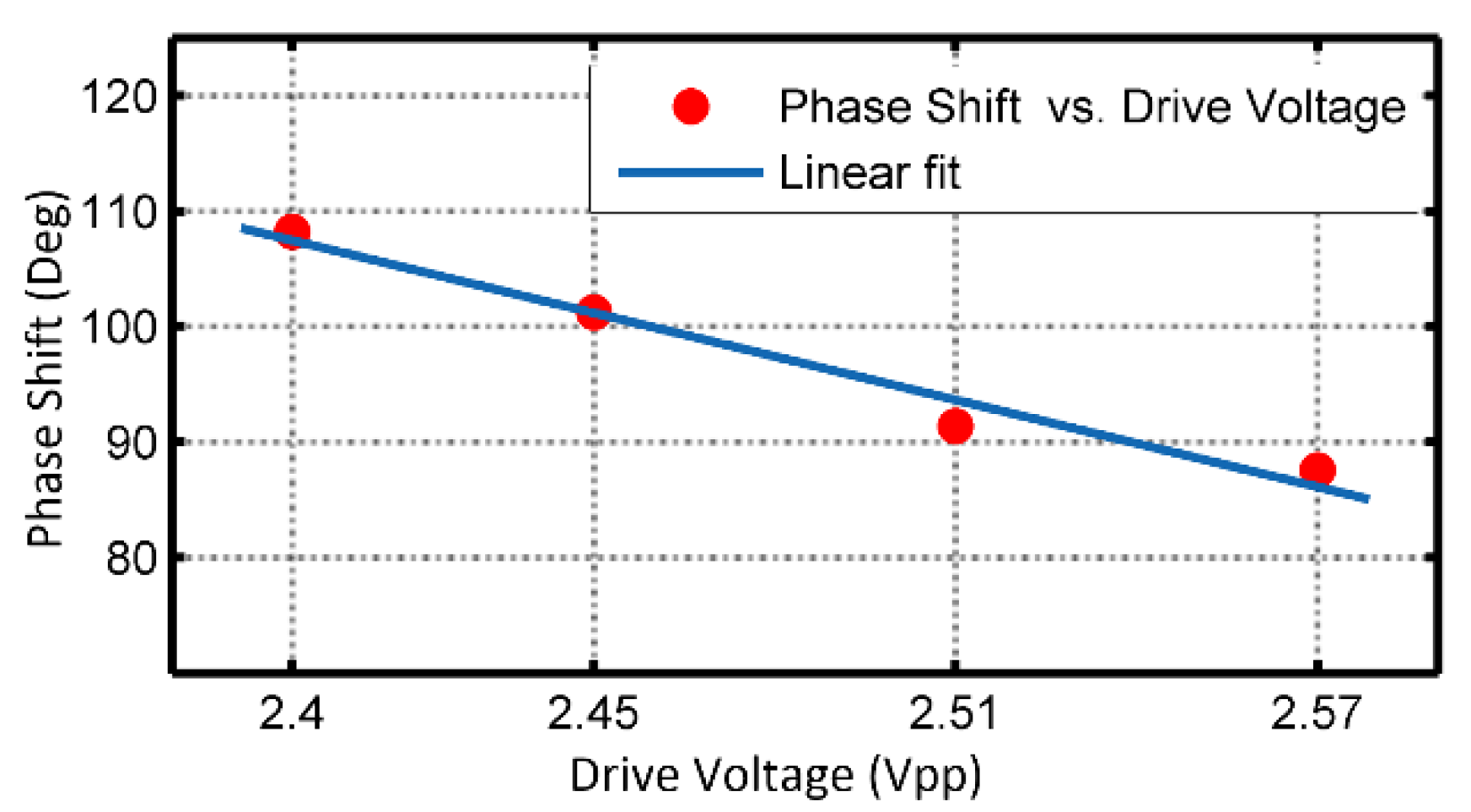
Disclaimer/Publisher’s Note: The statements, opinions and data contained in all publications are solely those of the individual author(s) and contributor(s) and not of MDPI and/or the editor(s). MDPI and/or the editor(s) disclaim responsibility for any injury to people or property resulting from any ideas, methods, instructions or products referred to in the content. |
© 2023 by the authors. Licensee MDPI, Basel, Switzerland. This article is an open access article distributed under the terms and conditions of the Creative Commons Attribution (CC BY) license (https://creativecommons.org/licenses/by/4.0/).
Share and Cite
Li, Y.; Peng, Z.; Shen, X.; Wu, J. A Novel Method for Quadrature Signal Construction in a Semiconductor Self-Mixing Interferometry System Using a Liquid Crystal Phase Shifter. Photonics 2023, 10, 1121. https://doi.org/10.3390/photonics10101121
Li Y, Peng Z, Shen X, Wu J. A Novel Method for Quadrature Signal Construction in a Semiconductor Self-Mixing Interferometry System Using a Liquid Crystal Phase Shifter. Photonics. 2023; 10(10):1121. https://doi.org/10.3390/photonics10101121
Chicago/Turabian StyleLi, Yancheng, Zenghui Peng, Xiao Shen, and Junfeng Wu. 2023. "A Novel Method for Quadrature Signal Construction in a Semiconductor Self-Mixing Interferometry System Using a Liquid Crystal Phase Shifter" Photonics 10, no. 10: 1121. https://doi.org/10.3390/photonics10101121
APA StyleLi, Y., Peng, Z., Shen, X., & Wu, J. (2023). A Novel Method for Quadrature Signal Construction in a Semiconductor Self-Mixing Interferometry System Using a Liquid Crystal Phase Shifter. Photonics, 10(10), 1121. https://doi.org/10.3390/photonics10101121



